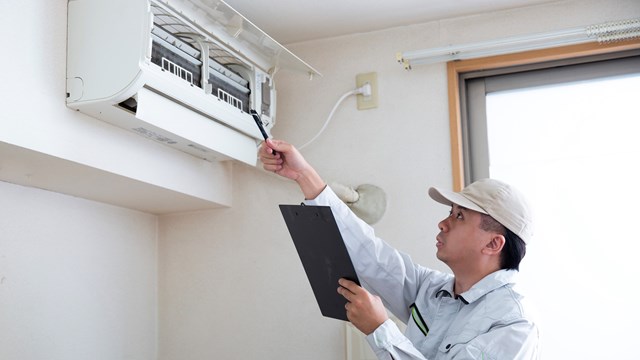
Ever since the government deregulated the telecommunications market nearly ten years ago, more and more cable and satellite TV providers have been vying for our attention, constantly improving technology, service, and convenience.
Today, digital cable and satellite dishes mean never having to spend a boring rainy day indoors with nothing good to watch on TV. Companies like Time Warner Cable offer a multitude of new technologies to please even the most discerning entertainment junkie, and co-op and condo boards have a wide array of options when it comes to choosing which option is best for their building community.
Before cable and satellite service were on the radar, most people's TVs were wired to a master antenna on the roof of their building and picked up a few local stations. With the advent of cable however, scores of channels were wired right into the TV - along with perfect reception and more choice.
The first cable TV franchises appeared in Manhattan in 1970 and hit a high note in 1989 when Time Inc. and Warner merged to create Time Warner. The government's 1996 deregulation of the industry allowed other companies to enter the market as well, breaking the monopoly held by cable franchise owners.
Today, there are a total of nine cable franchises in New York City - seven of which are controlled by Time Warner and its affiliates, and cover all of Manhattan, Queens, and Staten Island and about one-third of Brooklyn. The other two are controlled by Cablevision and serve the rest of Brooklyn and the Bronx.
Improving on the old-school cable technology, Time Warner began delivering digital cable television in 2000. "There are more channels, sharper pictures and better sound," says Bob Watson, director of Time Warner's strategic marketing division.
For residents in buildings already hooked up for cable service (which is almost all of them) digital cable simply requires installation of a digital box, and enables subscribers to make use of real-time editing and recording services like TiVO and digital video recording, or DVR. Recording services allow customers to "tape" their favorite shows and sporting events without a VCR or DVD recorder. The DVR offers upwards of 30 hours of recording capability without having to purchase a new device. The cost of the service - around $10 per month, depending on the area - is simply added on to the subscriber's cable bill.
According to Victor Cruz of Time Warner Cable, when DVR first became available, customers were lining up to subscribe. "Customers were literally lined up out the door and around the block to get it," he says. And it's still catching on; Cruz estimates that at least 50 percent of the New York market will have a DVR in the near future.
Even with improved cable delivery, another option - satellite television - is gaining ground among co-op and condo residents as well. Nearly doing away with cables and cords, satellite service offers yet another means of delivering television and Internet services, either by way of a satellite dish on the roof or a programmed box on top of the television console, as is the case with service provided by DIRECTV and Dish Network, the two main purveyors of satellite TV technology in the city.
According to Helen Chee, director of marketing for MDU Communications, a New Jersey-based company specializing in communication and information services for multi-unit buildings, "We can install a single satellite dish on the roof that receives a digital signal from two satellites, offering viewers access to more than 200 channels from DIRECTV. Our systems also include local channels, so residents now really have more viewing choices available to them than ever before."
According to Chee, there is no upfront installation fee for most satellite receivers, and the monthly subscription price is comparable to other competitors' cable rates. Like cable television users, satellite TV users are equipped with a small receiver box in their apartments. While local stations are not transmitted via satellite, viewers still control all programming and can access all channels - including local stations - with their remote controls.
"Under the Telecommunications Deregulation Act of 1996, satellite-based broadcasters are not allowed to provide local channels," says Herb Hauser, president and CEO of Barnes Wentworth, Inc., a Manhattan firm that provides communications network and infrastructure design, installation and project management for residential and commercial buildings. "The satellite companies get around this by offering the master antenna along with the dish. The local channels come in pretty well."
But is one system far and away better than the other? In reality, there are certain advantages both cable and satellite TV have over each other. According to Cruz, the main advantage of cable TV over satellite is that cable - particularly digital cable - often delivers better reception in urban areas because weather, tall buildings, and line of sight have no effect on the picture. Cable can also deliver stable broadband Internet access with the same subscription.
Cable TV's drawbacks hinge mostly on cost and availability. These days, cable providers don't offer any free basic cable service, and subscribers are limited to whatever channels are provided by their area's cable operator.
Like cable, satellite TV also offers excellent picture quality, but unlike cable, satellite can connect people living outside cable service areas to all the channels cable subscribers get, and usually many more.
Like terrestrial TV, however, having a clear line of sight for the mini-dish is important, which can sometimes make good reception a challenge for residents surrounded by towering buildings. As long as the dish has a clear view of the sky where the satellite is located, however, subscribers should have no trouble getting the signal.
The other drawback of satellite systems is the equipment needed to set them up. A separate coaxial line must be brought to each dish, and most satellite providers charge extra subscription fees for each additional receiver. Also, many buildings object strongly on aesthetic grounds to having their facades or rooftops bristling with satellite dishes, and some may not even grant residents roof rights at all - making it tough for the person on the second floor to get a signal.
To solve the issues of unsightly individual dishes and lack of a clear line of sight, many buildings wanting satellite service have opted to invest in one main system that will serve a number of subscribers throughout the co-op or condo. There's really no limit to the technologies available to co-op and condo owners, and certainly few restrictions because of high-rise living.
Another big plus with digital cable and satellite delivery of certain channels is High-Definition TV, or HD. With HD, sports fans can see the holes in linebackers' jerseys, and appreciate every bone-crunching nuance of a hockey game.
DIRECTV, Inc. announced at the very beginning of 2005 that 12 of the nation's largest designated market areas - including New York - will be among the first to receive local channels in HD via DIRECTV in the second half of this year.
According to DIRECTV president and CEO Mitchell Stern, "With the launch of the first of our local HD markets"¦the addition of HD local channels to our programming lineup will provide new opportunities for growth as demand for HD programming increases, and will enable us to compete even more aggressively with cable."
Watching Golden Girls reruns in High Definition may sound great, but what's the financial impact if your building wants to retrofit itself for digital cable, or get residents a good deal on satellite TV service? Who foots the bill - and what about people who don't have televisions, or who couldn't care less about getting razor-keen reception of American Idol broadcasts?
The answer is fairly straightforward. When a building's board is impressed by the service package offered by a competing cable or satellite provider and votes to do business with the firm, it doesn't mean that everyone in the building has to use the new provider. However, as part of a retrofit agreement - and as a way to keep the costs down - the board may be required by the service company to guarantee a certain number of users. Most companies will do the initial wiring at no cost to the co-op or condo, since they make their revenues off subscribers who pay for the individual services. Since everyone's service package is different, though, no one would provide a firm estimate of the costs involved.
"If a building has 50 units or more and they agree to guarantee payment for "˜x' amount of users, then we can provide them with a reduced rate," Cruz says. The advantage to individual homeowners is obvious - no installation cost and reduced monthly fees. It's amenities like this that can give a building an edge in today's market.
If your board or management company has a savvy negotiator, they may even be able to convince a telecommunications company to return five to 10 percent of the profits it makes from your building's subscribers to your property.
"In most New York City condos and co-ops, the communications infrastructure is owned by the providers, like Verizon or Time Warner," notes Hauser. "Typically, they mine the value out of a property without returning a dime. We design ways for properties to retain more of their information rights."
And what about all the actual wiring and dish installation? According to the pros, the process of fitting a building out with today's high-tech options is fairly painless.
"As long as it's a normal installation, we'll install and upgrade an older building at no cost," says Cruz. In new buildings, many already have hidden, internal spots for wires, making the process nearly seamless. In other buildings, installation requires drilling and running wires through hallways, though they're usually hidden behind molding.
"If the job is custom and it requires structural alterations, then there will likely be a charge," Cruz says. Sometimes that new molding or woodwork can cause friction in a building, where perhaps residents might be resistant to changing the look of their common areas. Other times, residents dislike the idea of an army of mini-dishes anchored to the exterior of their building.
"Sometimes aesthetics is a factor," Cruz says, "If there's any resistance [to installing new technology,] it's usually because we have to build new infrastructure. Unfortunately, there's no way around the fact that sometimes we have to put a piece of wire down the hall and into an apartment."
For co-op and condo boards, installing the latest in high technology pays off not only with happy longtime residents, but with happy new residents as well.
Not all real estate experts see a building's cable or satellite capabilities as a make-or-break amenity, of course. "I can't say that pre-wired services or dedicated computer lines are deal-makers yet, because they're not the biggest criteria that will sell one apartment over another," says one broker with the Manhattan-based Corcoran Group. "A lot of buildings still don't have them - but they're certainly helpful to present it to a prospective buyer."
Others, however, see digital cable, DIRECTV, and other high-tech services coming to the fore as vital components of the package buyers are looking for. According to Howard Slavin, chief operating officer for the Manhattan-based real estate investment firm Allied Partners, "No sophisticated buyer today would move into a building that didn't have some type of satellite and high-speed internet access."






Leave a Comment